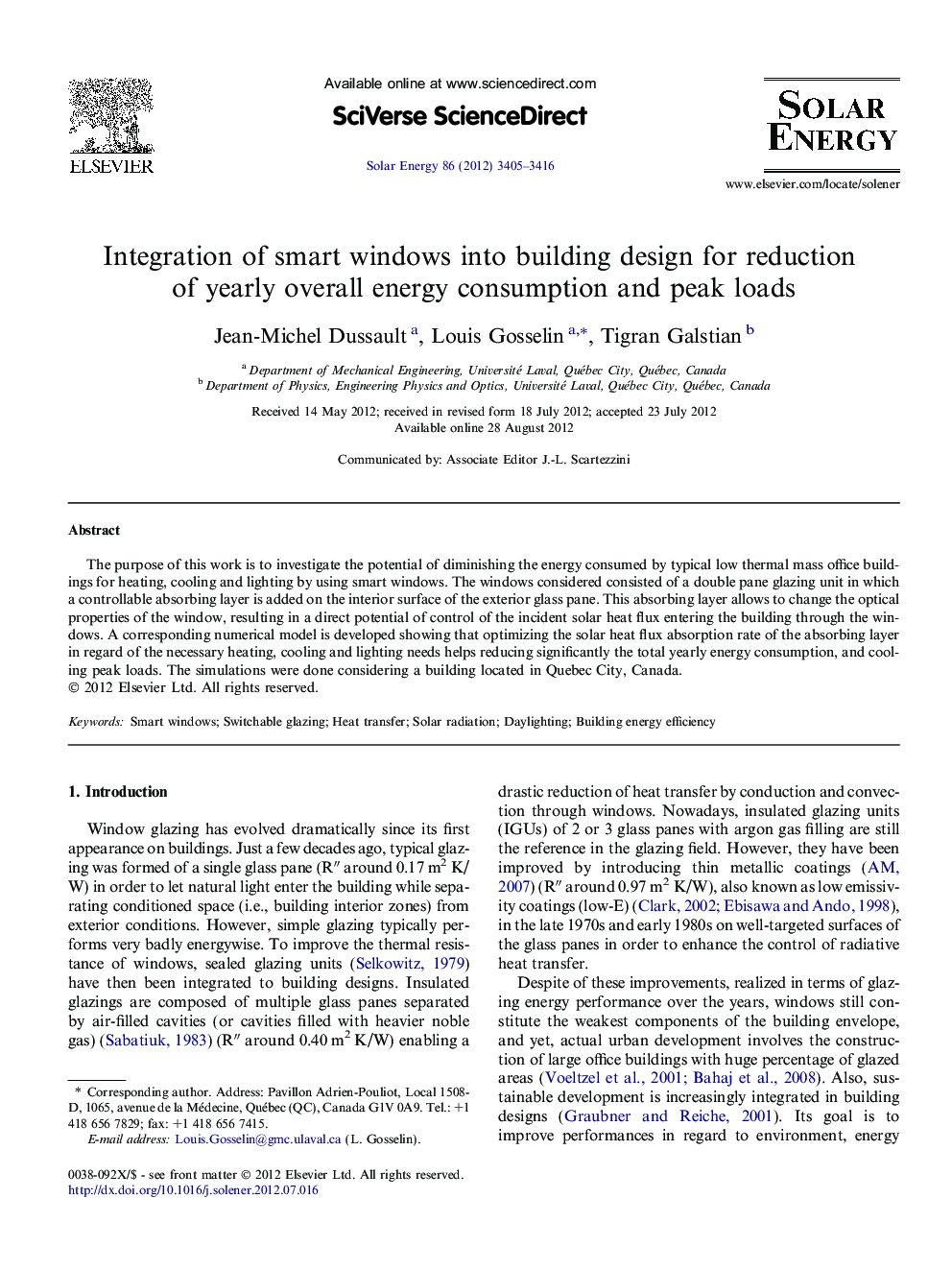| Article ID | Journal | Published Year | Pages | File Type |
|---|---|---|---|---|
| 1550818 | Solar Energy | 2012 | 12 Pages |
The purpose of this work is to investigate the potential of diminishing the energy consumed by typical low thermal mass office buildings for heating, cooling and lighting by using smart windows. The windows considered consisted of a double pane glazing unit in which a controllable absorbing layer is added on the interior surface of the exterior glass pane. This absorbing layer allows to change the optical properties of the window, resulting in a direct potential of control of the incident solar heat flux entering the building through the windows. A corresponding numerical model is developed showing that optimizing the solar heat flux absorption rate of the absorbing layer in regard of the necessary heating, cooling and lighting needs helps reducing significantly the total yearly energy consumption, and cooling peak loads. The simulations were done considering a building located in Quebec City, Canada.
► We model a building in a temperate climate integrating a smart window technology. ► We propose an optimization approach for smart window opacity. ► Optimizing smart window opacity results in yearly energy consumption reductions. ► A design strategy is proposed considering initial costs and performances.
